Day 38: Ankles to Strappado
Tying the two arms are parallel together in the back and pulling up is called the strappado position. It was a common torture position both in the medieval Europe and Japan Edo period. The tie that holds the arms in this position using several wraps is often called armbinder. Combining an armbinder in the back and tying the ankles in creates a classic variation of the hogtie.
Shoulder Straps
The hogtie position can be difficult to maintain and attaching first to the shoulders helps removing some pressure from the wrists and make the tie more sustainable. To achieve this, it is great to start with a solid shoulder structure.
To keep this tie safe, it is important to make sure the rope under the arm press against the torso and avoid the clusters of nerves in the armpit and inside of the arm. Pressure on top of the shoulder is usually fine to a certain degree of intensity. If you plan to struggle a lot, you may consider adding more wraps for sustainability.
Here we present two methods to create a similar tie.
- Single column tie – A simple way to attach to the shoulder is to tie a single column tie where each loop go around a different shoulder.
- Using the bight – You can use a change of direction in the bight to create shoulder straps that don’t leave a bight hanging. This variation cannot be untied from the bight.
Armbinder Hogtie
Tying arms together in the back intensifies the feeling of restriction. The tie should be adapted to the level of flexibility of the arms.
Adding wraps on the arms increase the risk of nerve injury, the more pressure, the more risky this tie become. Be careful in the placement and avoid high level of tension.
- The median nerve is vulnerables at the wrists. Monitor this nerve by making sure the thumb and index can close and squeeze
- The ulnar nerve is vulnerables at the wrists and elbows. Monitor this nerve by making sure the pinky and ring fingers can close and squeeze
- The radial nerve is vulnerables on the upper arm. Monitor this nerves by making sure the hand can open and fingers extend
For most people, this arm position is difficult to maintain, even without rope. Keep things simple and use quick release to allow for a quick way out. Adjusting the skin in the armpit can also help make this pose more sustainable. Slowly bring the arms back to the front at the first sign of hand weakness. Be prepared to cut the rope if necessary.
Practice Time!
Use the shoulders as the main anchor point for a hog tie and explore with armbinders in the back
Self-evaluation checklist
- Frictions are tight and compact with no undesired twists
- Tension is even across the tie
- The wraps are flat against the skin with low pressure to exposed nerves
- Is the tie symmetric?
- Pull the tie in different directions; how does it hold?
Exploration ideas
- Try different shoulder tie
- Variation of attachment: single column, or using the bight.
- Variation of placement and tension
- Add more wraps on the shoulder
- Experiment with the arm wraps
- Placement
- Tightness
- Cinched or not
- Number of wraps
- Friction design
- How does the mobility of the person being tied impact the tie design?
Inspirations and Resources
Coming soon!
Credit:

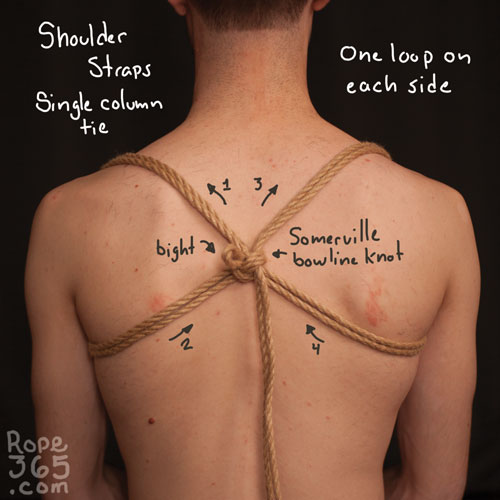
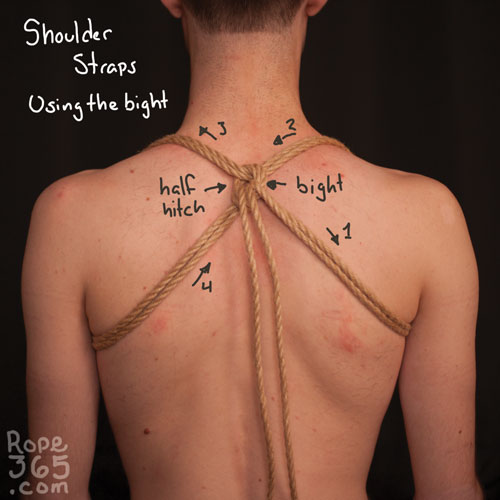
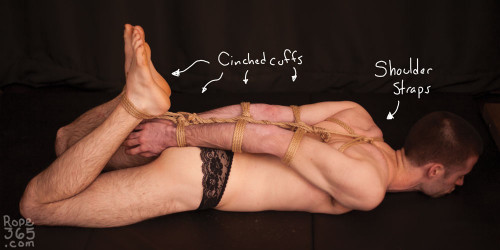
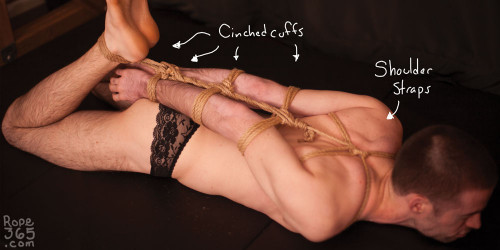
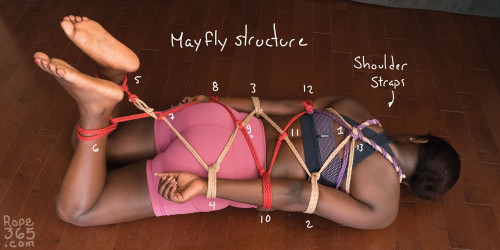
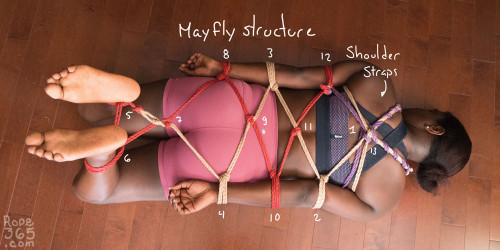
Leave a Reply